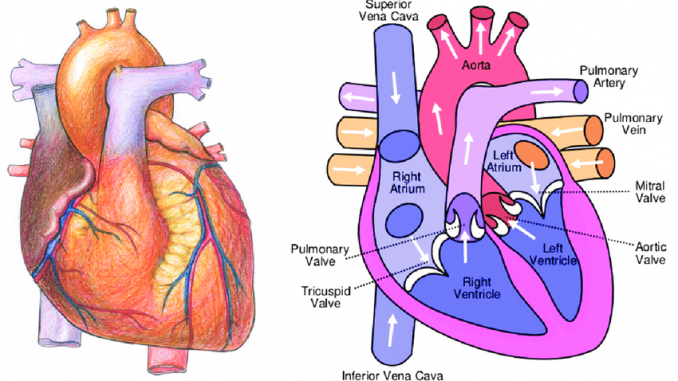
- Heart is a central part of the circulatory system.
- The human heart pumps blood into the arteries that carries oxygen and nutrients to all the tissues of the body.
- Heart is located between your lungs in the middle of your chest.
- The weight of human heart is between 7 to 15 ounces (200 to 425 grams).
- Each day the average heart beats 100000 times pumping about 2,000 gallons of blood.
- In humans, other mammals, and birds, the heart is divided into four chambers.
- The upper chambers are called the left and right atria, and the lower chambers are called the left and right ventricles.
- Four valves regulate blood flow through heart.
- Heart works as a pump that pushes blood to the organs, tissues and cells of your body.
- Blood delivers oxygen and nutrients to every cell and removes the CO2 and waste products made by those cells.
- The heart wall is made up of three layers:
- Inner- Endocardium, Middle- Myocardium and Outer- Epicardium.
- The heart is the first functional organ to develop and starts to beat and pump blood at about three weeks into embryo.
GK Quiz Heart important for SSC, UPSC, Railway and other exam
Heart Valves-
- The tricuspid valve regulates blood flow between the right atrium and right ventricle.
- The pulmonary valve controls blow from the right ventricle into the pulmonary arteries, which carry blood to your lungs to pick up oxygen.
- The mitral valve lets oxygen rich blood from your lungs pass from the left atrium into the left ventricle.
- The aortic valve opens the way for oxygen rich blood to pass from the left ventricle into the aorta, your body’s largest artery.
Leave a Reply